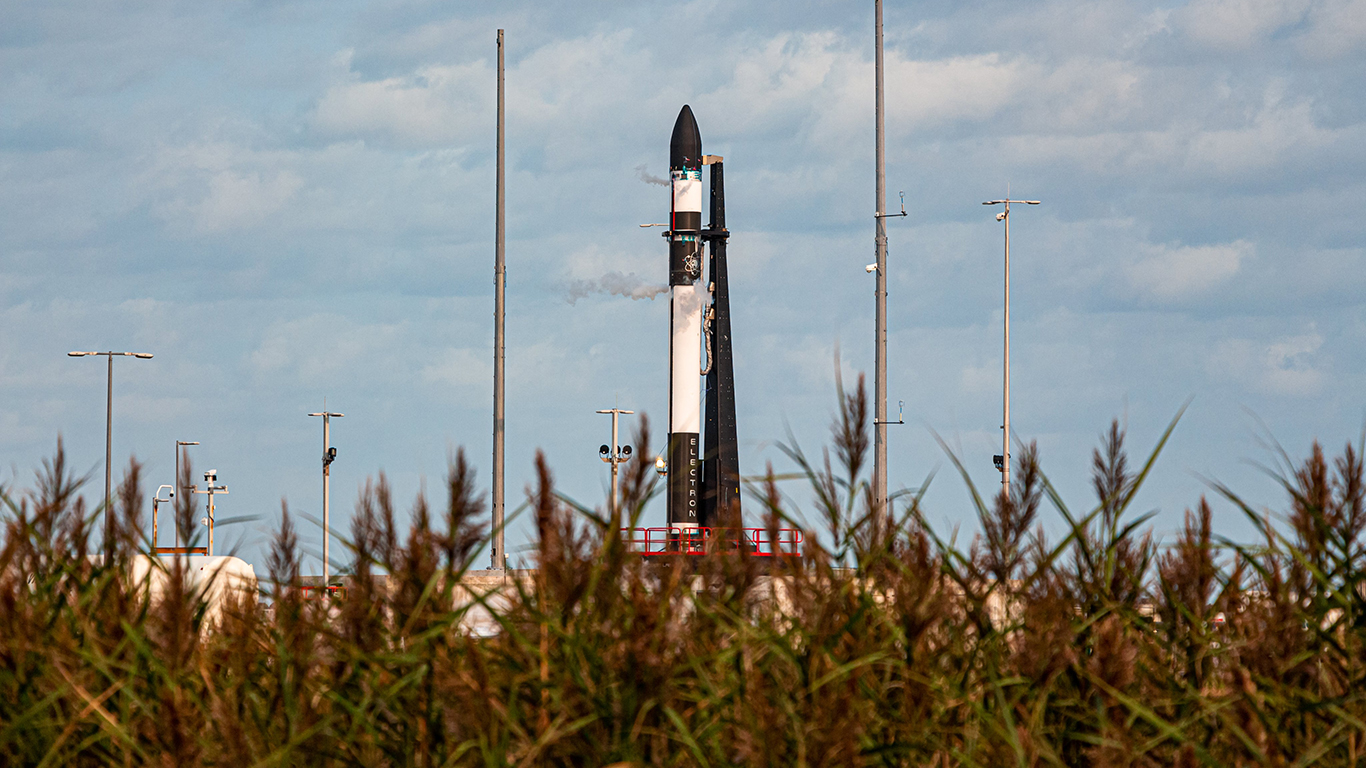
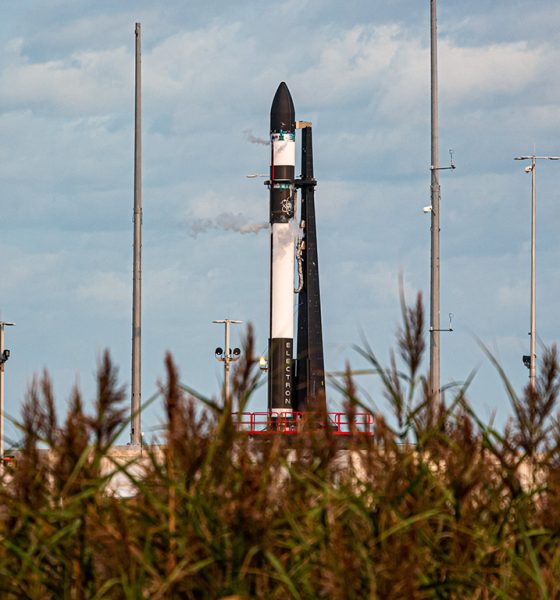
News
Rocket Lab secretly launches revolutionary satellite and readies for US launch debut
Rocket Lab’s recent flawless return to flight mission nicknamed “I Can’t Believe It’s Not Optical,” set the company up for loftier goals in the latter half of 2020 in a big way. Returning to operation after an in-flight anomaly and subsequent investigation is a massive accomplishment for any launcher. Returning to flight and debuting a pathfinder satellite developed and built in-house, however, solidified Rocket Lab as a full end-to-end space systems company.
For good measure, company founder and chief executive officer, Peter Beck, hopes to round out the year by activating two more Electron launchpads – one of which will be the launcher’s first US-based launch location dedicated to supporting missions for the United States government. Furthermore, following Electron’s seventeenth flight, Rocket Lab hopes to recover the expended first-stage booster – and perhaps more importantly, a mountain of data – as a stepping stone to launch vehicle reuse, a practice pioneered and solely dominated by SpaceX.
A return to flight and an introduction to space systems
Just eight weeks after Electron’s ill-fated thirteenth flight resulting in the loss of a second stage and all customer payloads due to an in-flight electrical anomaly, the next Electron was raised at Launch Complex 1 in Mahia, New Zealand. The fourteenth flight of Electron was a dedicated mission for San Francisco-based information services company, Capella Space. Initially announced, the mission deployed a single microsatellite called “Sequoia” to an approximate 500km circular orbit. Peter Beck later confirmed the mission also secretly featured the successful deployment of Rocket Lab’s first in-house designed and built satellite called “First Light.”
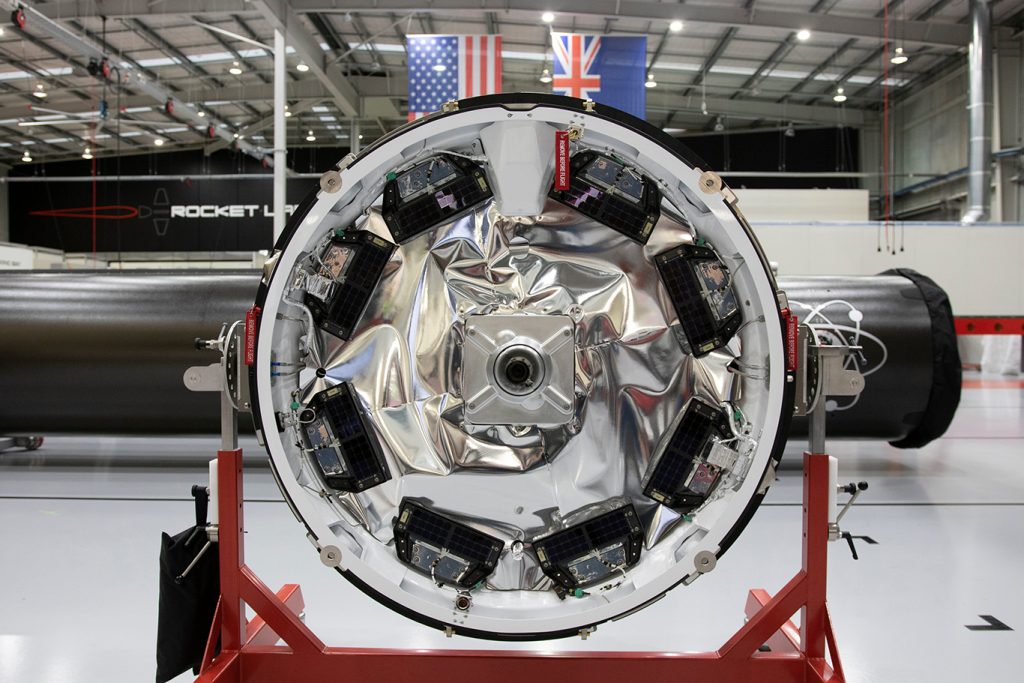
“First Light” is a pathfinder spacecraft based on Rocket Lab’s configurable Photon satellite platform. According to Rocket Lab, it exploits Electron’s Kick Stage, “a nimble but powerful extra stage on Electron designed to circularize payload orbits.” The Kick Stage is designed as a satellite bus with extended capabilities to transition into a satellite – Photon – and performing an independent standalone mission. This is exactly what occurred with “First Light.”
Following the deployment of the “Sequoia” microsatellite, Rocket Lab teams signaled the Kick Stage to enable the standalone Photon capabilities. The command transitioned the spacecraft from a delivery vehicle to a fully functional satellite for the very first time. “First Light” serves as the testbed of many upgraded components including improved management systems for power, thermal, and attitude control.
in a statement provided by Rocket Lab Beck said, “Launching the first Photon mission marks a major turning point for space users – it’s now easier to launch and operate a space mission than it has ever been. When our customers choose a launch-plus-spacecraft mission with Electron and Photon, they immediately eliminate the complexity, risk, and delays associated with having to build their own satellite hardware and procure a separate launch.”
Eventually, the extended Photon capabilities of the Kick Stage will be used to support lunar and interplanetary missions. Beck has gone on record many times stating that Rocket Lab is working toward funding a private mission to Venus with a more robust version of the Photon platform which will deploy a probe to collect information about the Venusian atmosphere.
Counting down to Electron’s first launch from Virginia
On September 17, just two weeks after introducing the world to “First Light,” Rocket Lab announced the final successful Electron wet dress rehearsal at its new Launch Complex 2 (LC-2) at the Mid-Atlantic Regional Spaceport in Wallops Island, Virginia.
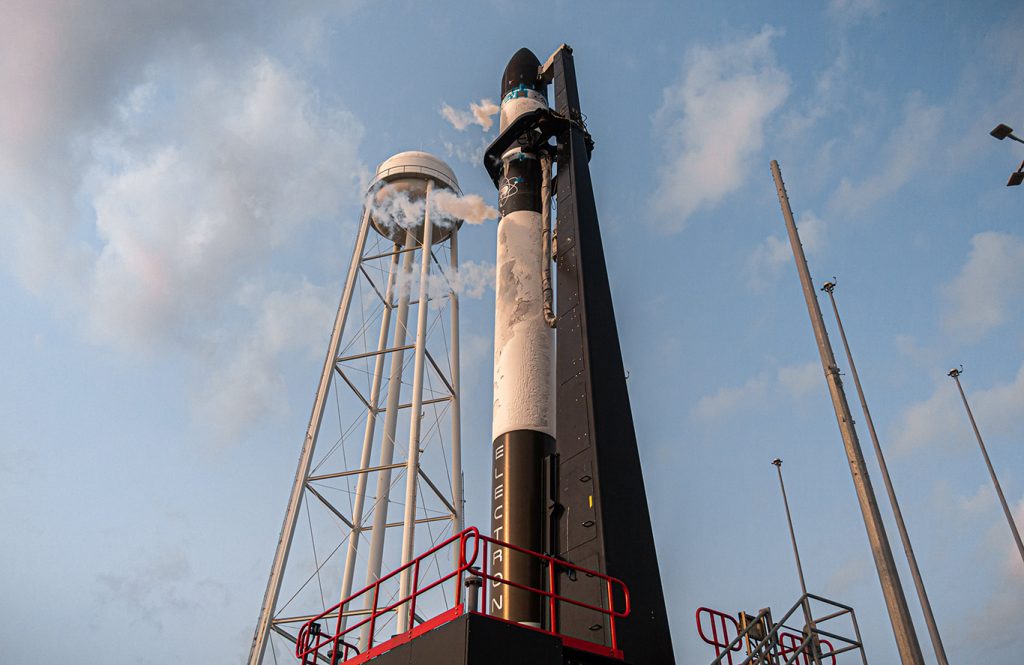
The wet dress rehearsal is a standard preparatory practice of raising the rocket vertical on the launchpad, fueling the rocket, and conducting a practice run of all countdown systems and procedures ahead of a launch attempt. This gives launch teams the opportunity to ensure that the rocket is prepared for flight and work out any kinks that may arise ahead of sending the vehicle to space. The countdown is carried down to T-0 and then the vehicle is emptied and safed.
Recently, Rocket Lab was granted a five-year Launch Operator License by the Federal Aviation Administration for the LC-2 site enabling the space systems company to support up to ten Electron missions a year from U.S. soil. The new operator license combined with the one previously procured for Launch Complex 1 in New Zealand allows Rocket Lab to support up to 130 flights of the Electron rocket globally per year.
It was speculated that Electron’s next flight – and the first launch from LC-2 in Virginia – would be the dedicated STP-27RM mission coordinated by the U.S. Space Force’s Space and Missile Systems Center. The first from Virginia will launch a single microsatellite for the Air Force Research Laboratory’s Monolith program. However, the first mission from Virginia is still waiting on a debut date to be identified.
In order for Electron to fly from Virginia, NASA must first certify Electron’s Autonomous Flight Termination System (AFTS) – a protective measure that will automatically destroy the rocket in a safe manner should anything anomalous occur during first stage flight. Electron’s AFTS has already previously flown numerous times from New Zealand. The first flight from Virginia, however, will be the first time a vehicle will launch from the Mid-Atlantic Regional Spaceport with an AFTS.
15 launches, 3 launch pads, and a booster recovery
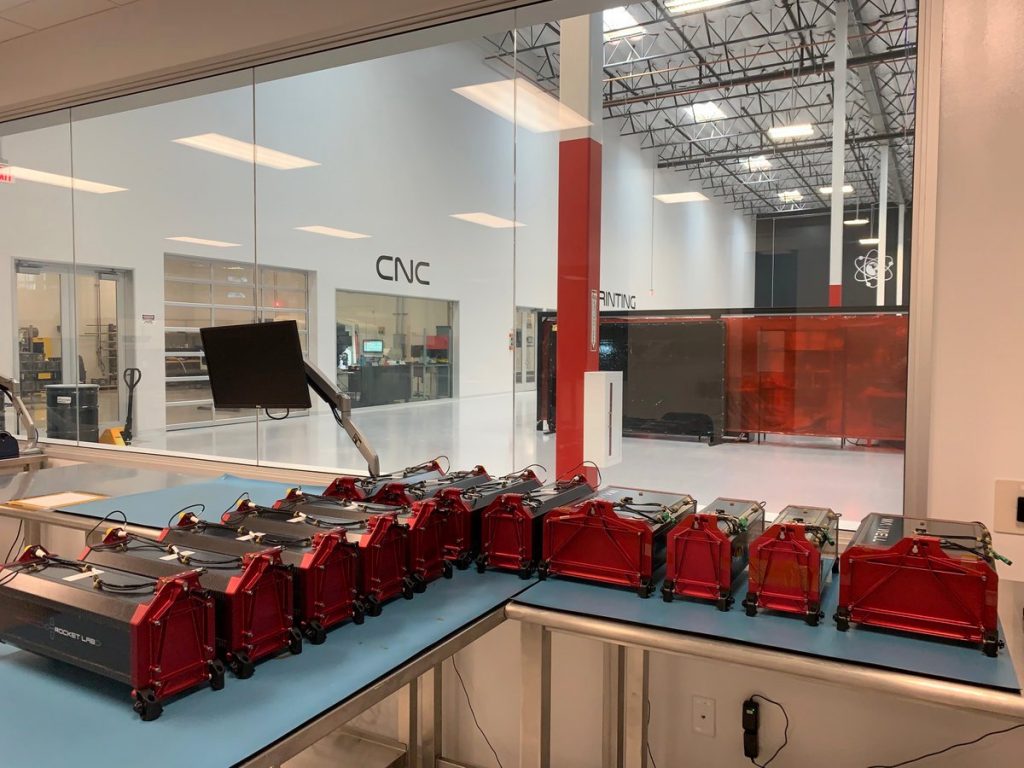
Until then, Rocket Lab is busy preparing for flight fifteen from New Zealand. The recently announced mission, nicknamed “In Focus,” is a rideshare mission featuring nine SuperDove satellites for Planet Labs and one payload for Spaceflight Inc. customer Canon Electronics Inc.
While preparing for the next flight, nearby Rocket Lab is simultaneously wrapping up construction on yet another launch pad. Launch Complex 1B is very much near completion and is expected to be brought online by year’s end. And that’s not the last goal Rocket Lab looks to achieve by the new year.

Beck has time and time again confirmed that the seventeenth flight of Electron will be the first attempt at recovering an expended first stage booster. Eventually, the company will attempt to catch the booster as it is falling back to Earth under the canopy of a parachute by utilizing a helicopter equipped with a specialized grappling hook. The first attempt at recovering a booster is not expected to be quite as elaborate.
Rocket Lab has strengthened the first-stage booster enough to survive the return trip. Until now, the booster has slammed into the ocean water and broken up into small bits. With the assistance of improved software and a deployable parachute, the booster of flight seventeen is expected to softly float back for a gentle water landing with the assistance of “recovery pontoons” as described in a Twitter post by Beck.
As of now, Rocket Lab has not identified any target dates for the upcoming milestones. The company has previously stated that the first mission from Virginia is expected to launch in the third quarter of 2020. Electron’s next flight – “In Focus” – from New Zealand is expected in the first half of October. Rocket Lab will provide future launch and development updates on their social media accounts.

News
Tesla China delivery centers look packed as 2025 comes to a close
Needless to say, it appears that Tesla China seems intent on ending 2025 on a strong note.

Tesla’s delivery centers in China seem to be absolutely packed as the final days of 2025 wind down, with photos on social media showing delivery locations being filled wall-to-wall with vehicles waiting for their new owners.
Needless to say, it appears that Tesla China seems intent on ending 2025 on a strong note.
Full delivery center hints at year-end demand surge
A recent image from a Chinese delivery center posted by industry watcher @Tslachan on X revealed rows upon rows of freshly prepared Model Y and Model 3 units, some of which were adorned with red bows and teddy bears. Some customers also seem to be looking over their vehicles with Tesla delivery staff.
The images hint at a strong year-end push to clear inventory and deliver as many vehicles as possible. Interestingly enough, several Model Y L vehicles could be seen in the photos, hinting at the demand for the extended wheelbase-six seat variant of the best-selling all-electric crossover.
Strong demand in China
Consumer demand for the Model Y and Model 3 in China seems to be quite notable. This could be inferred from the estimated delivery dates for the Model 3 and Model Y, which have been extended to February 2026 for several variants. Apart from this, the Model Y and Model 3 also continue to rank well in China’s premium EV segment.
From January to November alone, the Model Y took China’s number one spot in the RMB 200,000-RMB 300,000 segment for electric vehicles, selling 359,463 units. The Model 3 sedan took third place, selling 172,392. This is quite impressive considering that both the Model Y and Model 3 are still priced at a premium compared to some of their rivals, such as the Xiaomi SU7 and YU7.
With delivery centers in December being quite busy, it does seem like Tesla China will end the year on a strong note once more.
News
Tesla Giga Berlin draws “red line” over IG Metall union’s 35-hour week demands
Factory manager André Thierig has drawn a “red line” against reducing Giga Berlin’s workweek to 35 hours, while highlighting that Tesla has actually increased its workers’ salaries more substantially than other carmakers in the country.

Tesla Giga Berlin has found itself in a new labor dispute in Germany, where union IG Metall is pushing for adoption of a collective agreement to boost wages and implement changes, such as a 35-hour workweek.
In a comment, Giga Berlin manager André Thierig drew a “red line” against reducing Giga Berlin’s workweek to 35 hours, while highlighting that Tesla has actually increased its workers’ salaries more substantially than other carmakers in the country.
Tesla factory manager’s “red line”
Tesla Germany is expected to hold a works council election in 2026, which André Thierig considers very important. As per the Giga Berlin plant manager, Giga Berlin’s plant expansion plans might be put on hold if the election favors the union. He also spoke against some of the changes that IG Metall is seeking to implement in the factory, like a 35-hour week, as noted in an rbb24 report.
“The discussion about a 35-hour week is a red line for me. We will not cross it,” Theirig said.
“(The election) will determine whether we can continue our successful path in the future in an independent, flexible, and unbureaucratic manner. Personally, I cannot imagine that the decision-makers in the USA will continue to push ahead with the factory expansion if the election results favor IG Metall.”
Giga Berlin’s wage increase
IG Metall district manager Jan Otto told the German news agency DPA that without a collective agreement, Tesla’s wages remain significantly below levels at other German car factories. He noted the company excuses this by referencing its lowest pay grade, but added: “The two lowest pay grades are not even used in car factories.”
In response, Tesla noted that it has raised the wages of Gigafactory Berlin’s workers more than their German competitors. Thierig noted that with a collective agreement, Giga Berlin’s workers would have seen a 2% wage increase this year. But thanks to Tesla not being unionized, Gigafactory Berlin workers were able to receive a 4% increase, as noted in a CarUp report.
“There was a wage increase of 2% this year in the current collective agreement. Because we are in a different economic situation than the industry as a whole, we were able to double the wages – by 4%. Since production started, this corresponds to a wage increase of more than 25% in less than four years,” Thierig stated.
News
Tesla is seeing a lot of momentum from young Koreans in their 20s-30s: report
From January to November, young buyers purchased over 21,000 Teslas, putting it far ahead of fellow imported rivals like BMW and Mercedes-Benz.

Tesla has captured the hearts of South Korea’s 20s-30s demographic, emerging as the group’s top-selling imported car brand in 2025. From January to November, young buyers purchased over 21,000 Teslas, putting it far ahead of fellow imported rivals like BMW and Mercedes-Benz.
Industry experts cited by The Economist attributed this “Tesla frenzy” to fandom culture, where buyers prioritize the brand over traditional car attributes, similar to snapping up the latest iPhone.
Model Y dominates among young buyers
Data from the Korea Imported Automobile Association showed that Tesla sold 21,757 vehicles to the 20s-30s demographic through November, compared to BMW’s 13,666 and Mercedes-Benz’s 6,983. The Model Y led the list overwhelmingly, with variants like the standard and Long Range models topping purchases for both young men and women.
Young men bought around 16,000 Teslas, mostly Model Y (over 15,000 units), followed by Model 3. Young women followed a similar pattern, favoring Model Y (3,888 units) and Model 3 (1,083 units). The Cybertruck saw minimal sales in this group.
The Model Y’s appeal lies in its family-friendly SUV design, 400-500 km range, quick acceleration, and spacious cargo, which is ideal for commuting and leisure. The Model 3, on the other hand, serves as an accessible entry point with lower pricing, which is valuable considering the country’s EV subsidies.
The Tesla boom
Experts described Tesla’s popularity as “fandom culture,” where young buyers embrace the brand despite criticisms from skeptics. Professor Lee Ho-geun called Tesla a “typical early adopter brand,” comparing purchases to iPhones.
Professor Kim Pil-soo noted that young people view Tesla more as a gadget than a car, and they are likely drawn by marketing, subsidies, and perceived value. They also tend to overlook news of numerous recalls, which are mostly over-the-air software updates, and controversies tied to the company.
Tesla’s position as Korea’s top import for 2025 seems secured. As noted by the publication, Tesla’s December sales figures have not been reported yet, but market analysts have suggested that Tesla has all but secured the top spot among the country’s imported cars this year.








